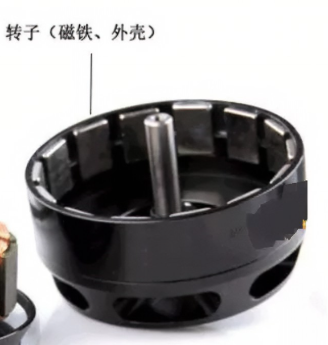What are the common mechanical failures and solutions for brushless motor motor automatic rotor loading machine?
1, transmission components failure
Failure phenomenon:
The conveyor belt slips. This will lead to the rotor can not be in accordance with the predetermined speed and position of the material, affecting the production efficiency. Conveyor belt after a long time of use, surface wear or insufficient tension may cause slippage.
Loose or detached chains. In a chain-driven loading machine, a loose chain will cause the transmission precision to drop, and the phenomenon of skipping teeth, and in serious cases, the chain will fall off, which will directly lead to the equipment stop running.
Solution:
For conveyor belt slipping, first check the tension of the conveyor belt. If the tension is insufficient, you can increase the tension by adjusting the tensioning device. If the surface of the conveyor belt is seriously worn, the conveyor belt should be replaced in time, and choose a high-quality conveyor belt that matches the model of the equipment.
When the chain becomes loose, the proper tension can be restored by adjusting the chain tensioner. If the chain has fallen off, it is necessary to reinstall the chain onto the sprocket and check whether the chain connection is firm, and replace the damaged links if necessary. At the same time, the chain should be lubricated regularly to reduce wear and prolong service life.

2、Failure of feeding mechanism
Failure phenomenon:
Feeding claw (or suction cups and other feeding tools) is damaged. The feeding claw may be worn, deformed or broken due to frequent gripping of the rotor for a long time, resulting in the inability to properly grip the rotor, affecting the continuity of the feeding.
The moving parts of the loading mechanism are stuck. For example, the rotor shaft of the loading arm does not move smoothly due to lack of lubrication or entry of foreign matter, so that the loading action cannot be completed accurately.
Solution:
If the feeding claw is damaged, it should be replaced with a new feeding claw in time, and in the daily maintenance, pay attention to observe the wear and tear of the feeding claw, and make a good replacement plan in advance. For the feeding mechanism using suction cups, check whether the suction force of the suction cup is sufficient, if there is leakage or damage should be repaired or replaced in time.
When the moving parts are stuck, first clean up the foreign matter around the moving parts, and then check the lubrication. If the lubrication is insufficient, add an appropriate amount of lubricant, such as lubricating oil or grease. At the same time, check whether the fit clearance of the moving parts is appropriate, if there is wear and tear resulting in excessive clearance, it may be necessary to replace the worn parts.
3、Bin failure
Failure phenomenon:
The material bin is clogged. Rotor in the silo may be due to irregular shape, mutual extrusion or silo structure is not reasonable and other reasons and clogging, resulting in the inability to normal down to the upper material mechanism.
Silo vibrator failure. Some silos are equipped with a vibrator to assist in the discharging of material. If the vibrator does not work, the discharging of material will be slowed down or stopped completely.
Solution:
For clogged bins, stop the feeder from running and then try to manually clear the clogged rotor. At the same time, the silo structure can be optimized, such as adjusting the tilt angle of the silo and adding an evacuation device to prevent clogging again.
When the silo vibrator fails, check whether the power connection of the vibrator is normal and whether the motor is damaged. If it is a power problem, repair the connection line or replace the fuse; if the motor is damaged, you need to replace the vibrator motor with a new one. In addition, check whether the installation of the vibrator is firm, and whether the vibration frequency and amplitude meet the requirements.
※ If you still can't solve the problem by the above ways and means, please contact the technical specialist of Xinhui Electromechanical Equipment Co., Ltd. through the page chat tool to seek help.







